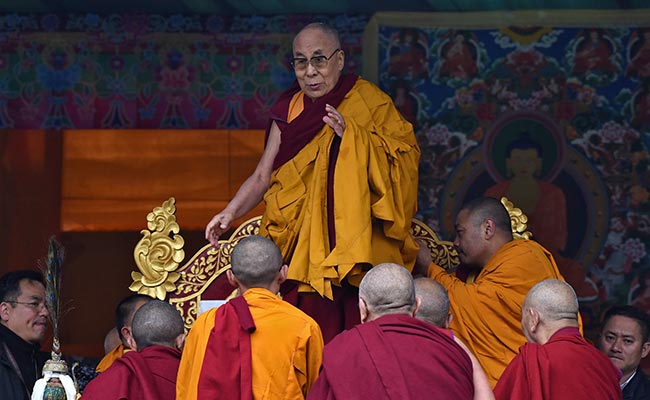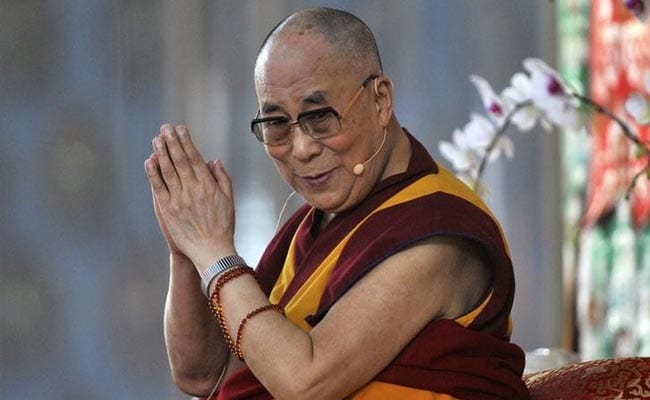As the 82-year-old Dalai Lama insisted on driving eight hours to Bomdila so as not to disappoint the Tibetan Buddhist congregation waiting for hours to receive him - after the authorities forbade him from flying because of rough weather - and prepared to go onwards to Tawang, the Chinese foreign office and media unleashed a barrage of savage criticism.
"We demand the Indian side immediately stop wrong actions, not hype up sensitive issues and take concrete steps to safeguard growth of India-China relations," said Chinese ministry of foreign affairs spokesperson Hua Chunying.
By ignoring China's concerns and persisting in arranging the trip, India had "severely damaged China's interests and China-India relations", she added.
"Unlike his predecessors, India's Prime Minister Narendra Modi seems to have taken a different stance on the Dalai issue, raising public engagements with the monk and challenging Beijing's bottom line," the Chinese-run state media pointed out, using only the pejorative first name in the Tibetan leader's title.
Certainly, much of the Chinese criticism stems from the fact that the Dalai Lama is visiting the remote Tibetan monastery in Tawang district, considered to be disputed territory by the Chinese and doubly sensitive because it was here, in 1683, that the Dalai Lama's ancestor, the sixth incarnation, was born.

India has stressed that the Dalai Lama's visit to Arunachal Pradesh is religious, not political
But they always met with a great wall of resistance by the Indian leadership. Meet the Dalai Lama, exchange private courtesies and greetings, but don't do anything that may irritate the growing power of the dragon, the diplomats were told.
The Modi government, on the other hand, seems to have adopted a diametrically different approach. Conscious that the 82-year-old Tibetan holy leader is not growing any younger, New Delhi seems to have decided to make full use of its "asset", as the Dalai Lama is sometimes vulgarly described, in the ongoing battle of wits with Beijing.
So if China was going to stab India in the eye by refusing it the courtesy of acceding to the Nuclear Suppliers Group, or by being the only country at the UN to hold up sanctions against Jaish-e-Mohammed leader Masood Azhar, then Delhi was certainly not going to sit quietly and turn the other cheek.
In recent months then, Delhi's fury against Beijing was slowly sharpened until it found the perfect outlet. The Tibetan leader was allowed, nay actively encouraged, to undertake activities which may have seemed to be par for the course for a top Buddhist leader, but were in fact not-so-subtle provocations against Beijing.
His meeting with president Pranab Mukherjee in Rashtrapati Bhavan in January, his participation at the Buddhist conference in Nalanda last month, as well as the ongoing visit to Arunachal Pradesh are all part of the same strategy - that of needling the Chinese.

"PM Modi seems to have taken a different stance on the Dalai issue," China's official media said
China's reactions are surprising, not least because the Chinese are an ancient civilization. Moreover, they have complete control over Tibet, notwithstanding the occasional dribble of people who continue to escape from there. Beijing's gradual encirclement of India in South Asia - whether through Pakistan, Nepal or even Sri Lanka or Myanmar - is a message to Delhi that it must learn to kowtow to the superior Asian power.
As China becomes the world's dominant power, it should hardly be bothered by the soft smile of the world's gentlest man, the Dalai Lama, leave alone his teachings of the Buddha.
But the truth is that it is. The Chinese are insecure about the Dalai Lama because they know in their heart of hearts that they have wronged the Tibetans - their own people.
The Chinese feel the Dalai Lama causes them to lose face, in front of the rest of the world. He is a living reminder not only of 1950, of the takeover of Tibet, but also of 1959, when he escaped from under their noses to India.
Ironically, none other than Narendra Modi had a terrible meeting with the Dalai Lama, his only one as Prime Minister, on the eve of Chinese president Xi Jinping's visit to India in August 2014. According to a source who was witness, the Tibetan holy leader was taken in an unmarked car and darkened windows to the Prime Minister's residence on Race Course Road in the heart of Delhi and given the diplomatic version of a dressing-down.

The Dalai Lama will offer teachings at the remote Tawang monastery in Arunachal Pradesh
When I asked the Dalai Lama about this meeting some months later, in an interview at the time for India Today, the Tibetan holy leader refused comment. But the meeting seemed to have clearly left a mark.
But over the last year or so, something seems to have happened to have changed the Prime Minister's heart and mind completely. To give credit its due, Modi - along with National Security Advisor Ajit Doval - seem to have led from the front in overhauling official Delhi's treatment of the honoured Tibetan holy leader.
From beyond the pale, the government has pulled the Dalai Lama back into the lakshman rekha and allowed him to carry out religious and socio-cultural activities - enough to make the Chinese sit up and take notice.
Certainly, the new Indian strategy's goal is to rile Beijing, to pay it back for its actions on Masood Azhar and its refusal to allow India into the NSG.
Remember it was none other than Modi who asked Xi Jinping in Tashkent last year to let India become a fellow member of the NSG - but President XI just smiled and shook his head.
The Dalai Lama's travels to Arunachal Pradesh will soon be over. Beijing has said it will soon teach Delhi a lesson. But at the moment at least, Delhi feels it has achieved a minor victory by doing exactly what the Chinese don't like. In the long, historical battle of wits between the two Asian powers, India seems to have won this particular round - and it has the Dalai Lama to thank for it.
(Jyoti Malhotra has been a journalist for several years and retains an especial passion for dialogue and debate across South Asia.)
Disclaimer: The opinions expressed within this article are the personal opinions of the author. The facts and opinions appearing in the article do not reflect the views of NDTV and NDTV does not assume any responsibility or liability for the same.


